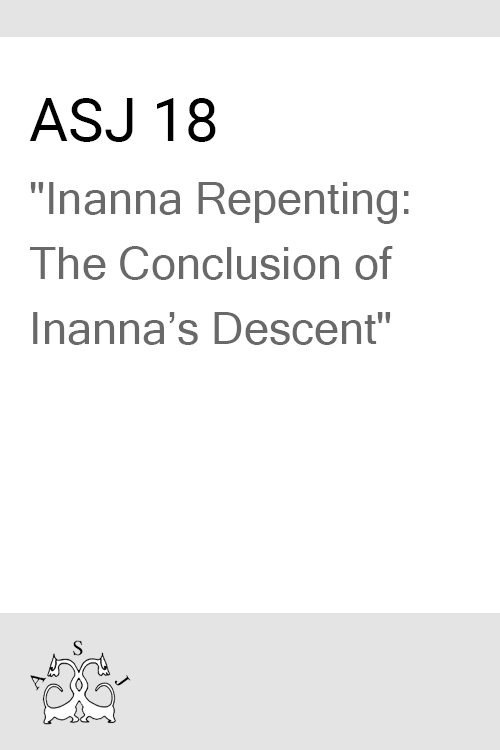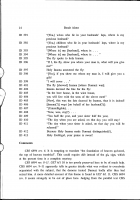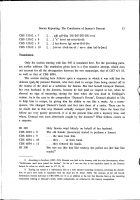Text summary
From: Journal article · Bendt Alster · 1996

Text: Partial Transliteration, Collation (full)
Sumerian ⟶ English a
| Line | Translation |
|---|---|
| p. 13 | |
| Translation | |
| 385 | Holy Inanna wept bitterly on behalf of her husband. |
| 386 | (CBS 6894 r. 8) The old female (mourners) started to perform a lament. |
| 387 | (CBS 6894 r. 9) . . . the men beat him. |
| 388 | (CBS 6894 r. 10) . . . they ... in their hand. |
| 389 | (CBS 6894 r. 11) . . . they fettered his hands. |
| 390 | She tore our (her hair like rushes), she pulled out (her hair like reeds). |
| p. 14 | |
| 391 | “(You,) wives who lie in your husbands’ laps, where is my precious husband? |
| 392 | “(You,) children who lie in your husbands’ laps, where is my precious husband? |
| 393 | “[Where is] my [husband], where is . . . |
| 394 | “[Where is] my [husband], where is ” |
| 395 | The fly spoke to holy Inanna: |
| 396 | “If I, the fly, show you where your man is, what will you give me?” |
| 397 | Holy Inanna answered the fly: |
| 398 | “[You], if you show me where my man is, I will give you a gift! |
| 399 | “I will cover . . .” |
| (Line 400 is not included) | |
| 401 | The fly [showed] Inanna [where Dumuzi was]. |
| 402 | Inanna decreed the fate for the fly: |
| 403 | “In the beer house, in the wine house, |
| 404 | you will live with the sons of the clever men!” |
| 405 | [Now], this was the fate decreed by Inanna, thus it is indeed! |
| 406 | [Inanna(?)] wept [on behalf of her husband(?)]: |
| 407 | “(Unintelligible). . . |
| 408 | “Now, woe, my(?) . . . |
| 409 | “You half the year, and your sister half the year, |
| 410 | “The day when you are asked, on that day you will stay! |
| 411 | “The day when your sister is asked, on that day you will be released!” |
| 412 | Because Holy Inanna made Dumuzi distinguished^), |
| 413 | Holy Ereškigal, your praise is sweet! |
| Source(s) a Alster, "Inanna Repenting", 13–14 launch . | |
Original source data
Background
"Inanna's Descent, Ending" is an English translation of the ending of the Inanna's Descent to the Netherworld Sumerian afterlife myth. It was published in 1996 by Bendt Alster. The translation is from Sumerian cuneiform to English, across two pages, and composed of twenty-eight lines (lines 385-413). The translation is mainly based on an artifact named CBS 6894. The article was published in a journal named Acta Sumerologica. This translation was an extremely important component of the decipherment of Inanna's Descent because it used various artifacts to reconstruct the ending of the myth.
Alster's publication translated the ending of the Sumerian myth by closely comparing the only artifacts that have intelligible lines of the ending of the myth:
- YPM BC 018686 (formerly YBC 4621 and known as the "Yale tablet")
- UET VI 10
- CBS 6894
- Ni 9776
- N 2986
- CBS 15162
Alster's main focus was the CBS 6894 tablet, which he used to construct a suitable ending for Inanna's Descent.
Cite this page
OMNIKA Foundation Contributors. ""Inanna's Descent, Ending": English Translation by Bendt Alster." OMNIKA – World Mythology Index, OMNIKA Foundation, 20 Jun. 2019, omnika.org/stable/205. Accessed 10 May. 2024.
OMNIKA (2019, June 20). "Inanna's Descent, Ending": English Translation by Bendt Alster. Retrieved from https://omnika.org/stable/205
OMNIKA Foundation Contributors. ""Inanna's Descent, Ending": English Translation by Bendt Alster." Las Vegas, NV: OMNIKA Foundation. Created June 20, 2019. Accessed May 10, 2024. https://omnika.org/stable/205.







